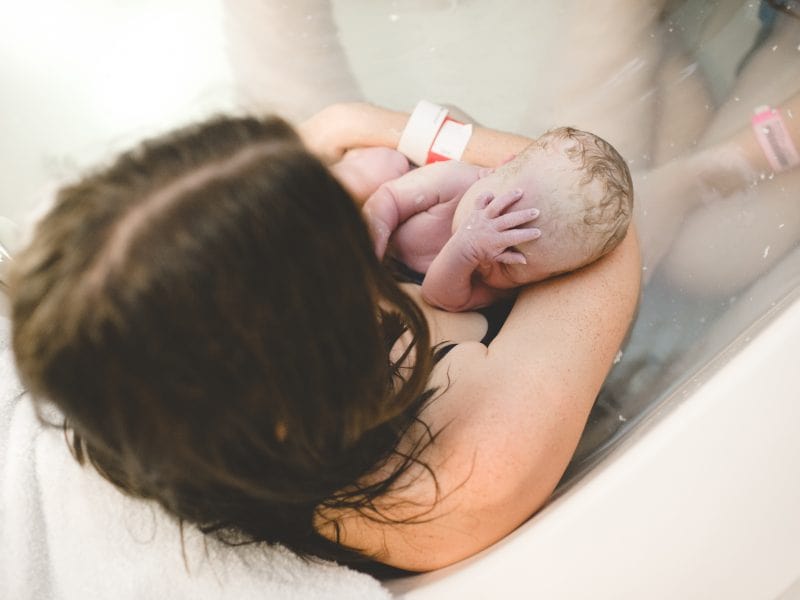Types of Childbirth

There are different types of delivery, but there is no ideal type. The correct thing to say is the most suitable delivery for a safe birth. According to the gynecologist and obstetrician, by the woman’s physiology, there is an 80% chance of the birth being normal and 20 to 30% of evolving to a cesarean section. However, “only going into labor so that we really know what their chance is in relation to the birth”.
These differences in types of childbirth are related to the procedures used, according to the level of difficulty of each birth. During prenatal care, talk to your doctor so that he can guide you on the most suitable way for you, as this varies according to the progress of each pregnancy. You can also prepare yourself with courses, exercises, and guidance for this very important moment.
Get to know the main types of birth
Caesarian Childbirth:
However, it is a surgical procedure and it is usually recommended for clinical reasons, such as: transverse baby, low placenta, baby that has passed 4.5kg, fetal suffering, active herpetic infection, diabetic pregnant women, situations in which the mother has some cardiac malformation that prevents her from making the effort of normal childbirth, among others.
In the cesarean section, the mother receives an epidural anesthesia (only in some cases general anesthesia is necessary). A screen is placed in the thorax region for better asepsis. The doctor cuts seven layers until it reaches the uterus through an incision of 10 cm made above the pubic hair. When the baby is reached, the doctor gently removes the placenta for his team to remove. The cut is closed with stitches.
This procedure has the slowest recovery and highest risk of maternal infection. The woman does not feel pain at the time of delivery because of the anesthesia, but may feel pain later.
Among the types of childbirth, a cesarean section that happens in labor is much better than a scheduled one. This is because when entering the labor, there is a guarantee that the baby is mature, ready for birth. Another issue is the oxytocin released at the moment, which helps in breastfeeding, the uterus becomes thinner, bleeds less and the baby is more fitted.
Natural Birth: no external interventions
As the name itself explains, this type of birth is the most natural there is. The mother is 100% protagonist of the actions. Childbirth is considered natural when there are no external interventions or any type of medical procedure. The baby is born when it feels ready and the mother actively participates in this process, pushing it out of her body. The woman can feel strong pain, but recovery is fast. This type of delivery has less chance of complications and problems for the baby.
Normal Birth: Vaginal with the support of technology
The difference between natural childbirth explained above and normal childbirth is that it has a little help from technology to be finalized. It is still a vaginal birth, but it is not considered “natural” when the dilation of the uterus is induced or some kind of anesthesia, analgesic, or substances are used to accelerate contractions.
Also, in cases of emergency or wear of the mother and baby, the doctor can use an instrument called forceps to finish the delivery. This instrument is similar to a spoon and is inserted into the vaginal canal to assist in the removal of the newborn.
Generally, it is observed how effective the contractions are, how dilated they are, and how the baby is fitting in to continue with a normal delivery. The size of the baby and the type of pelvis is also related, but it is not the final criterion for a cesarean section, for example. When pregnant women, for some reason, cannot perform a normal birth, it is possible that there is some guilt. The types of birth do not interfere with a mother’s love!
Humanized Birth: freedom and focus on needs
This type of childbirth generates a bit of doubt and also some controversy. The main objective of humanized childbirth is to offer the mother and the baby special care and attention, with a greater role for the mother during the process, avoiding as much as possible the surgical procedures that offer unnecessary risks, leaving only for delicate cases.
Contrary to what many people think, humanized childbirth does not need to be done at home, in the bathtub or pool. It can be done in a hospital, because the important thing is the professionals involved in the process: attentive, without haste and respecting the time of each pregnant woman.
The pain the woman feels at the time of delivery is understood as a normal physiological function that can be relieved by non-pharmacological means such as bath or shower, but it does not mean that she cannot use analgesics if she wants. The important thing is for the woman to feel free to choose the position and the interferences she wants. If the situation requires a cesarean section, the procedure can also happen in a humanized way. The baby goes straight to the mother’s lap.
Crown birth: when gravity becomes an ally
This birth is also natural, in the squatting position – sitting or crouching with the knees bent; it can also be done in humanized birth. In squatting, the birth can be faster because gravity acts in favor of the birth. It can be more comfortable for the woman and healthier for the baby, because it no longer has the blood compressions of the delivery lying on its back.
It is only indicated for women who have a perfectly healthy pregnancy and no pressure problems and can only perform if the fetus is in the cephalic position (upside down). The advantages of this type of childbirth are the participation of the partner, the non-use of invasive methods for pain relief, freedom of movement, and immediate recovery.

Water birth: the most tranquil for the baby
In this delivery, the pregnant woman can have her daddy’s company in the water, which covers the belly and must have a body temperature of 37ºC, because the warm water leaves the pregnant woman more relaxed, relieving the pains of contractions, decreased blood pressure and muscle relaxation. It is faster and less painful for the mother and more peaceful for the baby, because it goes from one warm liquid medium to another. It is not recommended for premature births or those who need medical follow-ups.
Home birth: in the comfort of your home
With a qualified and well-trained team, carrying safety equipment, it is possible. The ideal is to have a pediatrician in the team to guarantee an assistance to the baby. “It is essential that you are absolutely risk-free, you have to have a maternity ward as a reference for an emergency plan, adequate environment and family support”, reinforces the obstetrician.
